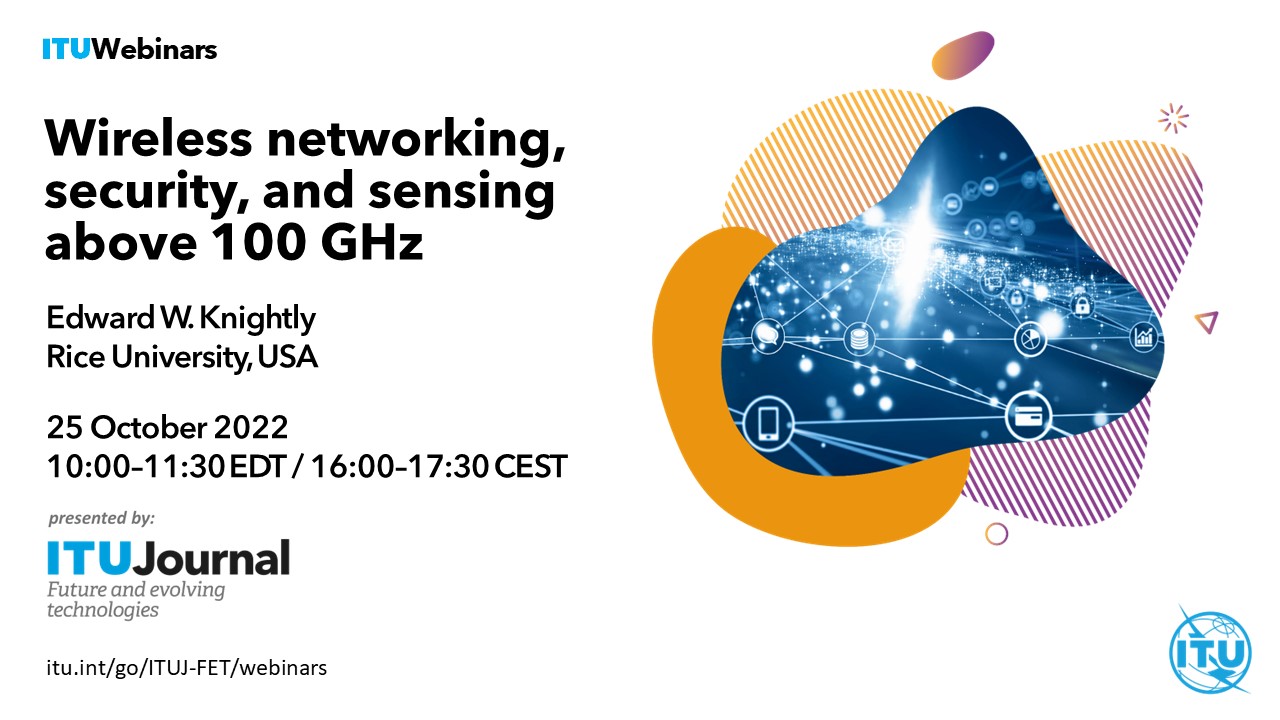
TALK
Spectrum above 100 GHz provides a promising foundation for realizing unprecedented capabilities in next generation wireless networks. The speaker began by describing emerging transmitter and receiver architectures that can realize high-frequency communication and sensing. This talk then addressed the key elements needed to realize highly directional, high data rate links that are robust to client and environmental mobility. The speaker also described how new sensing capabilities can simultaneously provide millimeter scale resolution without traditional array processing methods used in lower frequency bands. Lastly, physical layer security were addressed: while narrow beams can make an eavesdropper's task more difficult, the speaker described a new class of “Metasurface in the middle” attacks that yield a formidable adversary. Throughout the talk, experimental results to illustrate current capabilities in these areas were used.
WISDOM CORNER: LIVE LIFE LESSONS
Participants had the chance to hear from Prof. Knightly about his impactful life lessons over the years as well as his advice to young researchers in the field of information and communication technologies.
| Edward Knightly is the Sheafor-Lindsay Professor of Electrical and Computer Engineering and Computer Science at Rice University. He received his Ph.D. and M.S. from the University of California at Berkeley and his B.S. from Auburn University. He is an ACM Fellow, an IEEE Fellow, and a Sloan Fellow. He received the Dynamic Spectrum Alliance Award for Research on New Opportunities for Dynamic Spectrum Access and the National Science Foundation CAREER Award. He received best paper awards from ACM DroNet, ACM MobiCom, ACM MobiHoc, IEEE Communications and Network Security (CNS), IEEE SECON (twice), and IEEE INFOCOM. He served as general chair or technical chair for ACM MobiHoc, ACM MobiSys, IEEE INFOCOM, and IEEE SECON. He received the George R. Brown School of Engineering Teaching + Research Excellence Award in 2021. He serves as an editor-at-large for IEEE/ACM Transactions on Networking and serves on the scientific council of IMDEA Networks in Madrid and the scientific advisory board of INESC TEC in Porto. He served as the Rice ECE department chair from 2014 to 2019. Professor Knightly’s research interests are design and in-the-field demonstration of new mobile and wireless networks and systems, including mission-driven autonomous drone networks, wireless security, and millimeter wave and terahertz spectrum. He leads the Rice Networks Group. The group’s projects include deployment, operation, and management of a large-scale urban wireless network in a Houston under-resourced community. This network, Technology For All (TFA) Wireless, has served thousands of users in several square kilometers and employs custom-built programmable and observable access points. See a
video from the 2016 White House announcement of the Advanced Wireless Research Initiative. The network was the first to provide residential access in frequencies spanning from unused UHF TV bands to legacy Wi-Fi bands (500 MHz to 5 GHz). His group developed the first multi-user beam-forming WLAN system that demonstrates a key performance feature now provided by Wi-Fi since the 802.11ac amendment. |

|
MODERATOR: Ian F. Akyildiz, ITU J-FET Editor-in-Chief and Truva Inc., USA
|
WATCH RECORDING